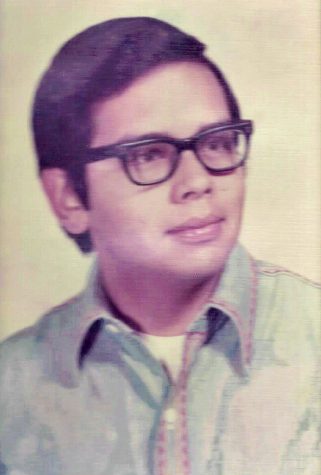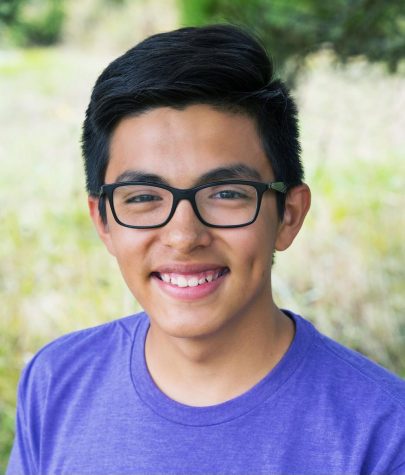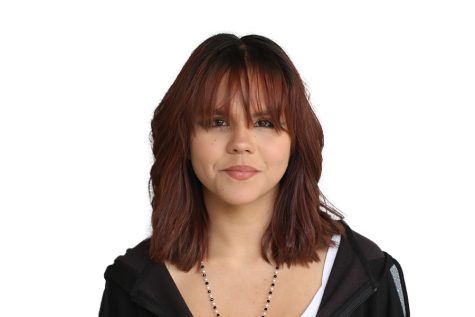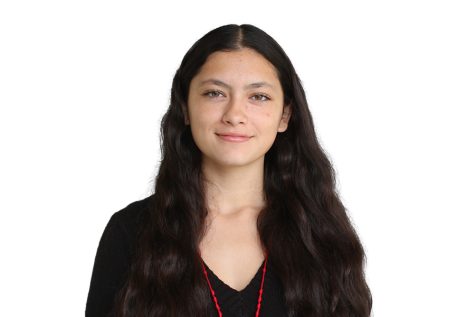Generation after generation, California school systems have slowly been improving their support offerings for students to help them reach and achieve their goals. However, even though schools have been making these changes to help students, the Latino community has yet to progress much.
California, like any other state, is constantly changing and developing. One thing that makes California stand out is the diversity and population rate. People of all races, identities, and unique backgrounds are found throughout California. The state is filled with people that have various ambitions, dreams, and contributions.
Opportunities can come at any second. However, for many Latinos, these opportunities can be hard to come across. And many challenges can slow them down from reaching their full potential.
Latino students make up more than half of the K-12 population in California, yet only 43% of those students end up attending colleges or universities, according to the Campaign for College Opportunity.
Despite there being a large percentage of Latino students, there are still a lot of Latino students who struggle to continue their education.
There are several pressing matters that have interfered with the Latino community and their education. They range from language barriers to complex disadvantaged backgrounds.
According to Salud America, these interferences and obstacles have greatly affected the majority of Latino students and their mental health because the lack of motivation, poor self-esteem, and mental blockages that follow poor mental health can hold them back from their education.
Some of the common struggles that Latino students face are transitioning to different schools after immigration, speaking English as a second language, isolation, racial identity struggles, and connecting with their culture.
John Martinez: Overcoming internalization and isolation
A lot of the internal struggles that Latino students face can be supported through counseling or therapy, but back in the 60s, they were dealt with independently. An individual who overcame some of these struggles around that time is John Martinez, a former ESL teacher at Seattle College.
While growing up in a diverse city, San Francisco, and attending Lowell High School, Martinez was exposed to many different opportunities and activities that could potentially help him excel, like sports and clubs. However, most of his studies weren’t very inclusive. Schools were primarily focused on teaching their students about American history at the time.
“Our school didn’t teach anything but the standard history of the United States,” Martinez said.
The opportunity to explore the history of Latin America was hard to find, but whenever Martinez found any chance to do so, he would act on it.
“Whenever I had an opportunity to write or study about Central America or Mexican culture. I always took that opportunity as a personal project or a part of my education,” Martinez said.
The lack of diversity and representation of Latino culture within the curriculum caused Martinez to feel less valued than others. This feeling eventually became internalized.
“I experienced a feeling of inadequacy and less value because I could see around me that the white children in school had much more representation and reflection in large society and culture, whereas I didn’t. So I internalized that imbalance within me,” Martinez said.

I experienced a feeling of inadequacy and less value because I could see around me that the white children in school had much more representation and reflection in large society and culture, whereas I didn’t. So I internalized that imbalance within me
— John Martinez
However, Martinez was not alone.
A lot of his peers felt the same way and were experiencing the same internalization.
“Most students did what I did, which was to internalize what we experienced and not to pursue or challenge them in any way,” Martinez said.
Topics that schools were also primarily focused on at the time, besides American history, were equality and democracy. Martinez and his peers were being taught that everyone is treated equally, yet they didn’t feel that sense of equality at school.
“All of us had this feeling inside that things were not as equal and democratic as we were taught they were,” Martinez said.
Throughout high school, Martinez and his friends helped each other and other students by volunteering to tutor and help newcomers with classes and the aspects of school nature.
At the same time, they started to become aware of the inequalities around them.
“Most of us began developing more consciousness about unequal treatment and presentation of history,” Martinez said.
Around that same time, John Martinez’s older brother Robert Martinez, a senior, formed a club for Latinos, La Organizacion de Latino-Americanos (LOLA), with his group of friends and included John.
LOLA started off as a social club for Latinos. They would hold gatherings with food and music and socialize. Students in this club also had the opportunity to speak more among themselves and express their personal thoughts and experiences.
They eventually came to the realization that most of their experiences and feelings were shared, and they weren’t the only ones going through it.
“We started to realize that all of us shared these feelings. Sometimes it was inadequacies, and sometimes it was a shame. Sometimes it was this feeling that we weren’t as valued in society and in general, our people didn’t get all those opportunities that we were taught about,” John Martinez said.
This moving realization led them to develop a desire for change and helped them realize that with unity comes power.
They soon shifted their gears and began to educate themselves and others, share ideas, bring in various speakers, and learn about the history that had been kept from them.
“Before we came together, a lot of us were just isolated as individuals, just trying to deal with these big problems trying to understand and deal with them individually,” John Martinez said. “Then we learned that after we came together, there’s a lot more we can do united.”
Maria Gloria Contreras: Assimilating into an unrecognizable country
Immigrant children have grown up with the idea that education is the way to escape poverty and their country. Having the mentality of studying hard gives them the motivation to give all their attention in school and advance in life to provide for themselves and their families. About 120,000 Hispanics immigrate to the U.S. looking for a better life, according to Pew Research center.
Maria Gloria Contreras immigrated to the U.S. looking for a better life and to gain an education. She struggled a lot with language and had to return to her country. Nonetheless, she was able to overcome all these obstacles with determination and the hopes of being able to become someone that could proudly represent her country and prove the stereotypes wrong.
“I came here when I was six years old. I attended elementary school in Modesto,” Contreras said.
With her parents and most of her siblings, Contreras immigrated to the U.S., looking for a better environment to live in.
“Going to elementary school obviously was really difficult fitting in because I didn’t know English at all. It was really challenging for me to communicate in class,” Contreras said. “Everything I did was wrong because I didn’t know the curriculum. I had a hard time adjusting to school because the semester had already started, so I was really behind. I didn’t really have any motivation or anything because I really didn’t know much.”
Everything I did was wrong because I didn’t know the curriculum. I had a hard time adjusting to school because the semester had already started, so I was really behind. I didn’t really have any motivation or anything because I really didn’t know much — Maria Contreras
The drastic changes in environments were hard to deal with, especially for a young girl entering an unknown country with an unknown language.
“I remember I started learning English, and things started to smooth over because they had classes where exchange students would be taught English. They have a lot of help for English learners, even for elementary school,” Contreras said.
The school she attended provided the resource she needed to be able to adjust to the environment. She found the classes helpful because they followed her rate of learning and helped her advance in her gurney to adjusting to a new country.
“That helped me a lot at school. My teachers were very supportive and understood that I didn’t grow up here so they would help me out more because of that,” Contreras said. “Going back to Mexico for elementary school and then coming back again for high school was really difficult because I took elementary school in Mexico, so I was behind the curriculum. Because I had that history of going back to Mexico, I wasn’t given the opportunity to take algebra or math in middle school to be more advanced in high school. I didn’t have the opportunity to be more advanced or to take AP classes to go to college.”
Schools didn’t trust that her English was developed enough because she had a history of going back to Mexico. They restrained her from being able to advance in her classes and weighted her down with extra support classes instead of helping her advance.
“I wasn’t as advanced as other students. I was really behind. So, in the beginning, they made me take English learners classes, even though I knew English. They did that because they didn’t believe or they didn’t trust that I was ready to take English classes so they sent me back in order for me to learn. It just limited my learning abilities even though I already know English coming back here because I had to take that extra class,” Contreras said.
While she attended high school, she was provided with much support to help her be able to be at the same level as everyone else. This helped her. Even though she wasn’t able to advance quickly, she was still able to catch up to regular classes.
“They helped me a lot at Carlmont. I remember for history, they gave me a different test because I was an English learner. And it was an easier test. It was easier to understand the words. It was like fewer long paragraphs, shorter for me to read faster and understand. So that was really helpful,” Contreras said. “I also had a professor in the English learners class that would help us do homework or help us understand the curriculum.”
Contreras has mentioned many times that she had barriers preventing her from being able to advance and understand her classes but with the programs at Carlmont, she was able to adjust properly.
“I did have barriers; my English wasn’t as good, so I couldn’t understand things as well. It was more difficult for me to do my homework or to understand what the teacher was saying,” Contreras said.
“I could only understand half of the words my professors would say in the beginning. That was one of the challenges that really set me back in terms of doing well in class, but I quicklycaughth up with the help of the professors who were just so helpful, and with their support, I quickly was able to catch up and do well in school,” Contreras said.
“By junior year, I didn’t need to take any English learning classes. I didn’t need to be treated like a special student because I already understood things, and I was getting the hang of it,” Contreras said. “So thanks to all the support there at that school, I was able to catch on to things and learn more and not need the English learner’s classes and be able to take AP classes.”
With the help provided at her school, she was able to overcome her biggest challenge and was able to accomplish something that will carry on in her family line.
Raffis Soto-Ramos: Identity struggles
Gone for good.
That is what Raffis Soto-Ramos, a Carlmont senior, first thought when he found out that his father was deported and sent back to Mexico in seventh grade. Gone for good.
“When he got sent to Mexico, it was a realization. He was gone for good,” Soto-Ramos said.
One thing that a child should never have to experience is having one of their parents taken away from them. Unfortunately, about half a million U.S. citizen children have experienced the deportation of at least one parent from 2011 through 2017, according to the American Immigration Council.
Soto-Ramos was one of those children.
But before Soto-Ramos’ father was deported, his mother had him switched to a different school in first grade.
“When I was in first grade, I went to a school that was mostly Latinos, and the academics were very different, but my mom didn’t like that. She didn’t like the way the systems worked, so she sent me to schools in San Carlos and Belmont,” Soto-Ramos said.
It was hard to adjust to these new changes, but luckily Soto-Ramos had his stepfather to support and guide him.
“Up until I was five or six, I didn’t really have a father figure. Even though I had my dad, he wasn’t really there. He was just there when he wanted to be there, but my stepdad was the father figure that I needed. He’s been a huge impact on my life,” Soto-Ramos said.
However, when Soto-Ramos switched schools, he found himself in an environment that was predominantly white and this led him to question his identity and the idea of having a normal family.
“From there, I learned about skin color and how different I was from other people and how different my family was,” Soto-Ramos said.
Because Soto-Ramos came from a different racial and socioeconomic background, he was sometimes ridiculed at school, which affected how he viewed himself.
“People don’t think it would be that huge of a difference, and it wouldn’t be that much of an impact, but it really is. The things that kids say it’s like as if it’s nothing. People take that to heart even though it seems like we don’t,” Soto-Ramos said.
Soto-Ramos grew up often feeling ashamed of his background. Sometimes he even struggled with the thought of wanting to change his skin color.
“When I was younger, there were times when I would cry to my mom, wishing I was white. I was just so ashamed of being brown or Mexican. I just wanted to get rid of it,” Soto-Ramos said.

When I was younger, there were times when I would cry to my mom wishing I was white. I was just so ashamed of being brown or Mexican. I just wanted to get rid of it
— Raffis Soto-Ramos
These issues not only affected Soto-Ramos in a negative way, but he also learned that he was able to grow from them.
“Going to an elementary school dominated by white people helped ground me and prepared me for any situations in high school. Going to a school that is mainly white and Asian, I learned the differences and how to deal with them from a young age. It made me realize that it doesn’t matter if I’m different,” Soto-Ramos said.
Soto-Ramos was finally able to overcome the identity struggles that he faced when he was younger.
“Instead of hiding who I am, I have to embrace it. Now it’s a part of who I am, and it’s not going to change. Thankfully I’m now proud of who I am,” Soto-Ramos said.
Even though Soto-Ramos was able to overcome this obstacle, he still wasn’t in touch with his culture. He’s been attending schools that are predominantly white and Asian.
“I never really was in touch with my culture. I went to an all-white school and did not have the opportunity to get to know my roots. I only know my culture from what my family says and does, but that’s as far as I know. I don’t know much about a traditional Mexican culture or, in general, Hispanic traditions,” Soto-Ramos said.
When he first came to Carlmont, he initially signed up for a Native Spanish-speaking class, but there weren’t enough students to fill that class.
“They took that class away during my first year of high school. I tried to sign up for it, but they announced that they didn’t have enough students for it to be functional,” Soto-Ramos said.
Even though Soto-Ramos never really had the opportunity to learn more about his origin in school, he still feels that it can be effective and have an impact on students’ lives.
Improvements & Changes
Based on the interviews, many of the struggles and challenges that Latino students face in school can correlate with or contribute to other issues. One thing that they all had in common was that they were in an environment where they felt they didn’t fit in.
To this day, some Latino students still struggle with connecting to their culture or fitting in because some of their schools lack adequate resources.
Kitzia Barbosa, a student from East Palo Alto Academy, mentioned that her school was very diverse but still lacked the resources to connect her to her culture.
“They’re not teaching us about our history and about other people. They’re teaching us about the language, which is not enough,” Barbosa said.
Juan Torres Ochoa, a student from TIDE Academy, also mentioned a similar issue he faced in his school.
“I would like to learn more about the Hispanic culture because I come from Mexico, but I would also like to learn about other Latin countries or cultures like Brazil or Argentina,” Ochoa said.
The student’s thoughts on the matter are important because it goes to show that many schools don’t provide programs to connect them to their roots and explore more of their culture.
However, over recent years, schools in California have slowly been progressing in providing students with resources to help them learn more about their culture or heritage.
Last year in Oct. 2021, Gov. Gavin Newsom signed into Law Assembly Bill 101 which is a historic bill that makes California the first state to require Ethnic Studies as a high school graduation requirement, according to California 100. Students are able to learn about the many experiences of diverse ethnic groups.
One student that benefitted from this class was Nicholas Barajas Gonzalez, a student from Menlo Atherton High School.
“Last year I learned a lot about my culture in Ethnic Studies. They talked a lot about it. And I felt that then right then and there, I was already learning so much that I didn’t know,” Gonzalez said.
At Gonzalez’s school, students are offered various opportunities and programs to be a part of to receive extra help or support.
“The program that I’m in helps you with homework. They help with a lot, and tutoring is a big thing. I get extra support and a whole lot of help with classes that I need support with,” Gonzalez said.
When these students first came to these unfamiliar schools, they felt lost. They felt as if they didn’t fit in or belong. But after finding support systems and people that they can relate with and grow close to at school, they can finally feel at ease.
“In the beginning, I just felt left out or the odd one out because I didn’t find my people. Once I found other people who were also Hispanic or people of color. I found my place with them, and I realized that it didn’t matter if I was different because there were always going to be other people like me out there,” Soto-Ramos said. “You just need to find them.”




